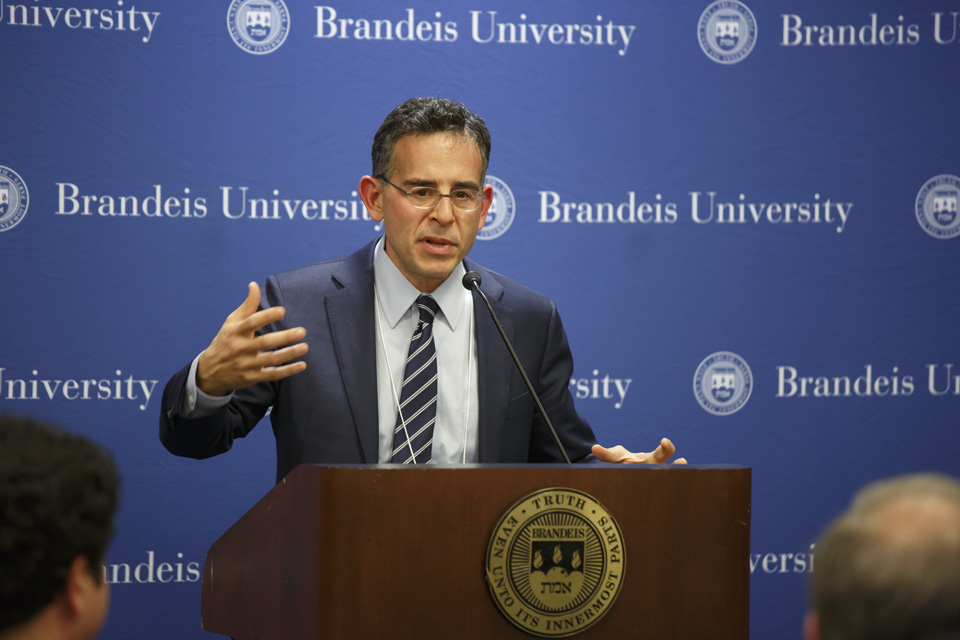Senior Scientist Andrew Kolodny addressed National Governors Association Conference
 Photo/Mike Lovett
Photo/Mike LovettBrandeis University senior scientist and Opioid Policy Research Collaborative director Andrew Kolodny
Brandeis University senior scientist and Opioid Policy Research Collaborative director Andrew Kolodny presented his insights on the nationwide opioid crisis at the National Governors Association Conference in Santa Fe, New Mexico on July 20.
Kolodny was featured on a panel with Minnesota Governor Mark Dayton, Oregon Governor Kate Brown, Robert Raines of the U.S. Postal Service and acting director of the U.S. National Office of National Drug Control Policy, James Carroll.
Kolodny offered 15-minute remarks, which were televised on C-SPAN, concerning the relationship between prescription opioids, heroin and fentanyl and the opioid addiction epidemic.
BrandeisNOW caught up with Kolodny before the conference.
BrandeisNOW: In the lead-up to this conference, some governors have been skeptical of drug injection sites. Can you provide your thoughts on this model?
Kolodny: I’d be in favor of a pilot study of a safe injection facility in Boston and other urban areas, but I don’t believe the intervention would be appropriate in a suburb or rural community. In suburban and rural areas, I don’t think people will commute into town multiple times a day to inject. I think the facilities would sit empty.
I do think it could be a worthwhile intervention in an urban community, where there are needle parks and public spaces like restrooms where people go to inject. Many assume that people are choosing this lifestyle, but most are suffering and want help. These programs could link people to treatment.
It’s important to note that the effectiveness of these clinics hasn’t been well studied.
BNOW: Do you see both sides of the arguments for this approach?
Kolodny: The opposition to these clinics believes that the government is condoning drug use, but I disagree. I don’t think these programs encourage injection drug use. I do think they could reduce the harm associated with injecting drugs, like overdoses and infections.
BNOW: What do you hope will be the takeaways from your presentation on fentanyl and opioid addiction at the National Governors Association Conference?
Kolodny: I hope the main takeaway is that a popular narrative about the opioid crisis is wrong, which is that our prescription opioid problem has turned into a heroin and fentanyl problem.
Fentanyl and heroin are flooding into communties as a result of demand for it by the increasing number of people suffering from opioid addiction. The opioid crisis should not be defined by the specific opioids involved in overdose deaths. The crisis is affecting many areas in our society: the work force, the increase in children in foster care, infants who are born opioid dependent, infections and on and on. All of these health and social problems have been driven by a sharp increase in the number of Americans suffering from opioid addiction. This is an epidemic of opioid addiction.
If we can recognize that, the strategies for responding to the crisis become clear. We need to prescribe opioids much more cautiously to prevent opioid addiction, and we need to improve access to effective outpatient addiction treatment for those suffering from this awful disease.
Categories: General, Research, Science and Technology





